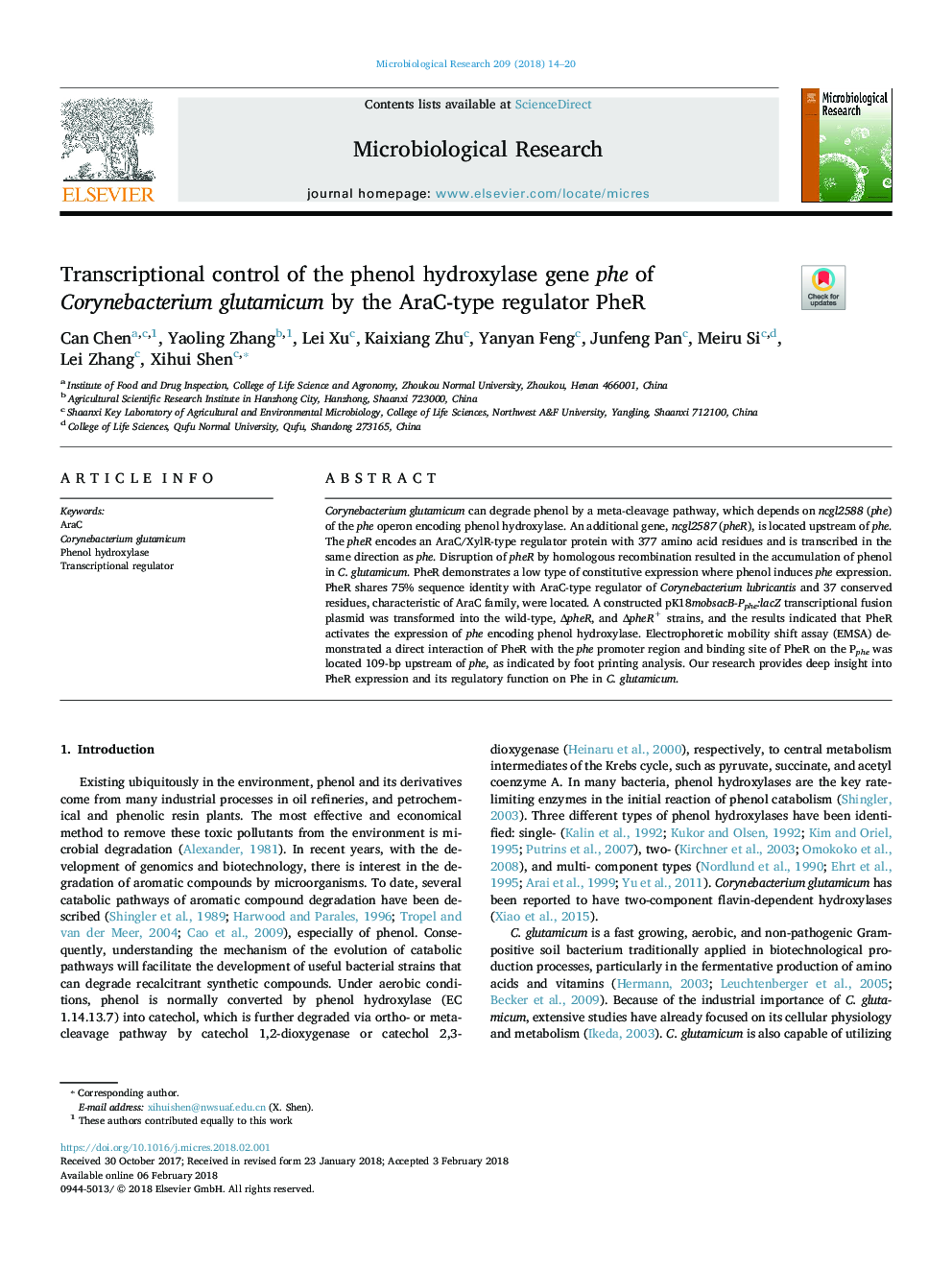| Article ID | Journal | Published Year | Pages | File Type |
|---|---|---|---|---|
| 8422984 | Microbiological Research | 2018 | 7 Pages |
Abstract
Corynebacterium glutamicum can degrade phenol by a meta-cleavage pathway, which depends on ncgl2588 (phe) of the phe operon encoding phenol hydroxylase. An additional gene, ncgl2587 (pheR), is located upstream of phe. The pheR encodes an AraC/XylR-type regulator protein with 377 amino acid residues and is transcribed in the same direction as phe. Disruption of pheR by homologous recombination resulted in the accumulation of phenol in C. glutamicum. PheR demonstrates a low type of constitutive expression where phenol induces phe expression. PheR shares 75% sequence identity with AraC-type regulator of Corynebacterium lubricantis and 37 conserved residues, characteristic of AraC family, were located. A constructed pK18mobsacB-Pphe:lacZ transcriptional fusion plasmid was transformed into the wild-type, ÎpheR, and ÎpheR+ strains, and the results indicated that PheR activates the expression of phe encoding phenol hydroxylase. Electrophoretic mobility shift assay (EMSA) demonstrated a direct interaction of PheR with the phe promoter region and binding site of PheR on the Pphe was located 109-bp upstream of phe, as indicated by foot printing analysis. Our research provides deep insight into PheR expression and its regulatory function on Phe in C. glutamicum.
Related Topics
Life Sciences
Biochemistry, Genetics and Molecular Biology
Biotechnology
Authors
Can Chen, Yaoling Zhang, Lei Xu, Kaixiang Zhu, Yanyan Feng, Junfeng Pan, Meiru Si, Lei Zhang, Xihui Shen,
